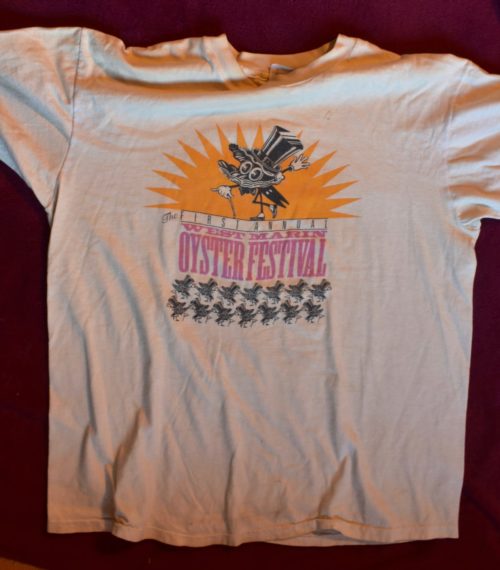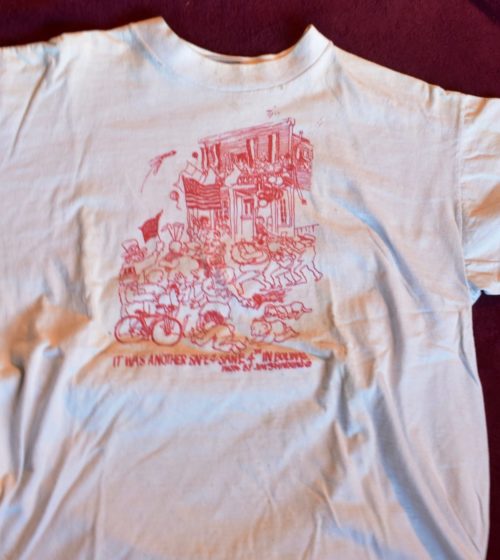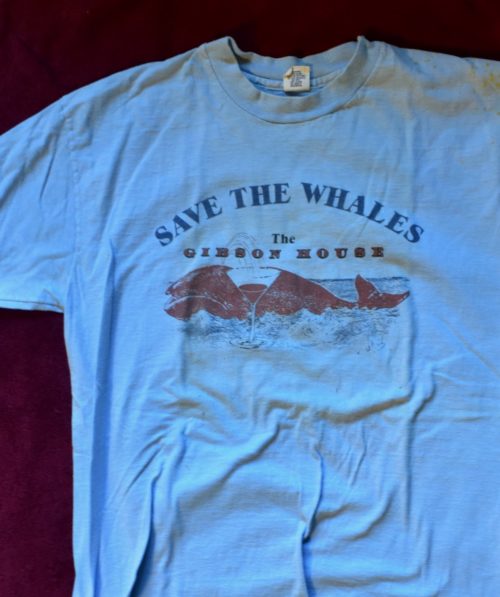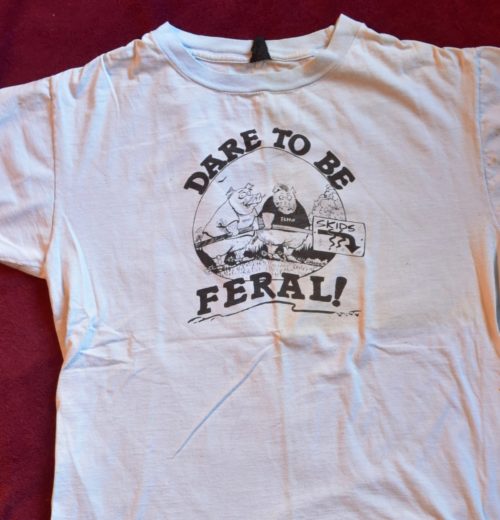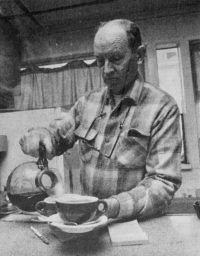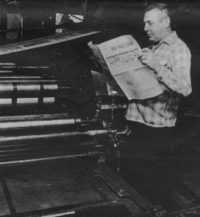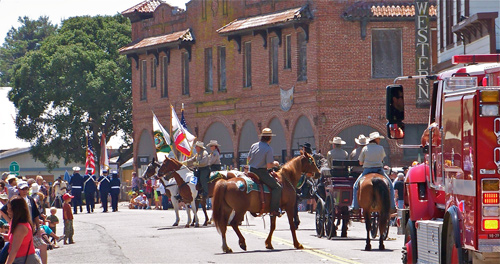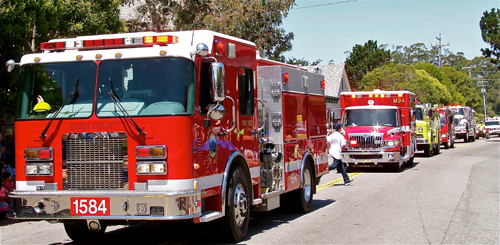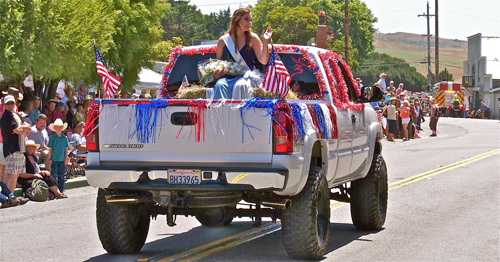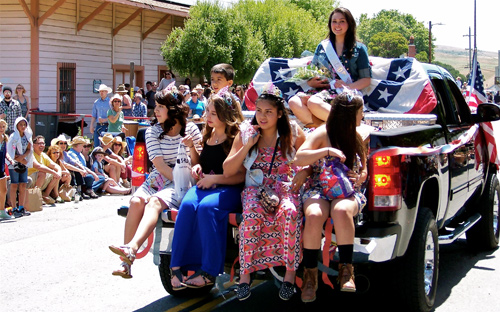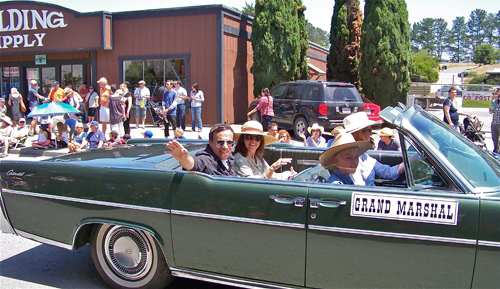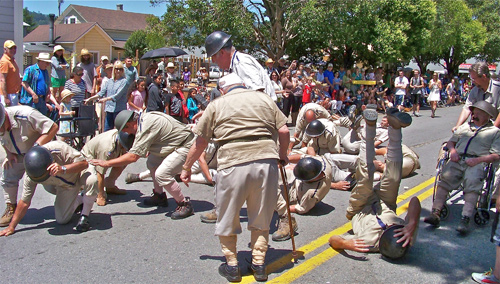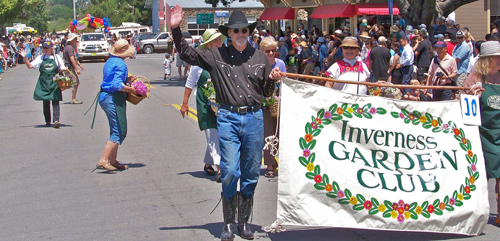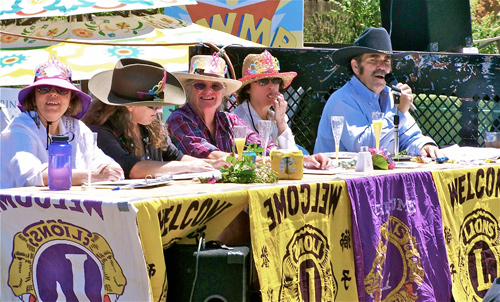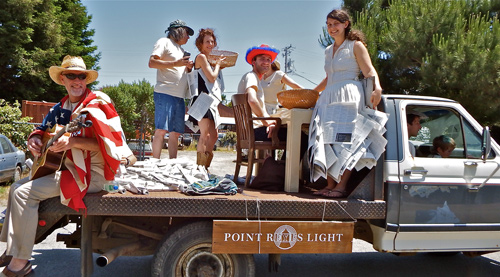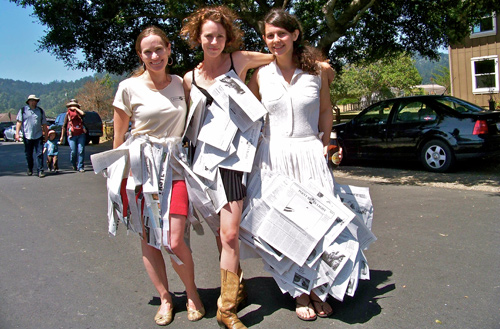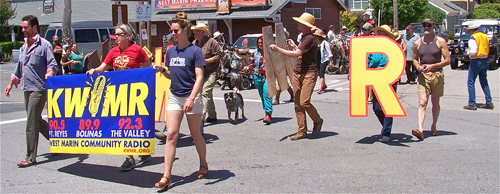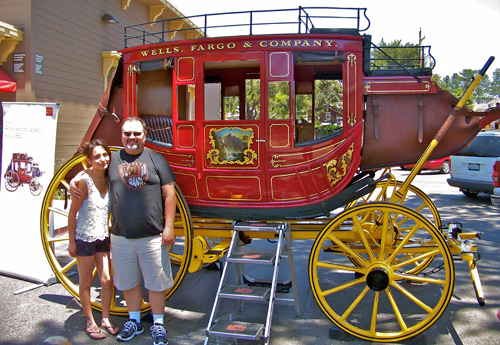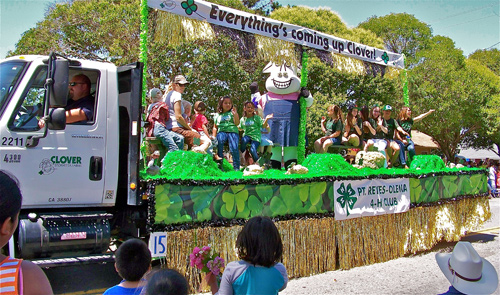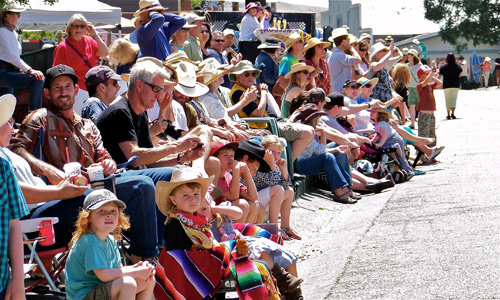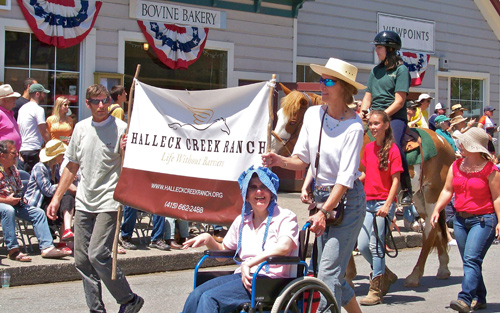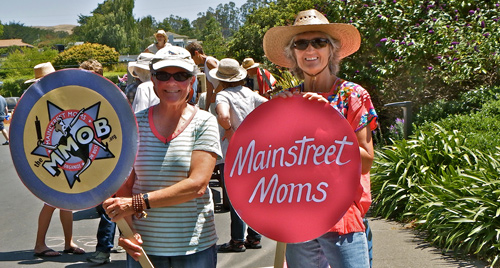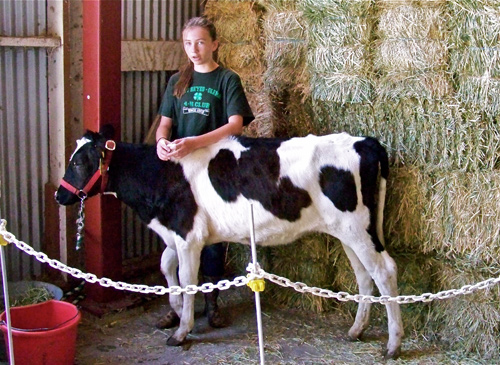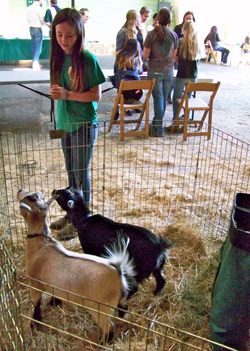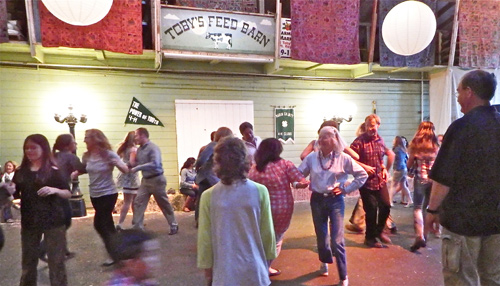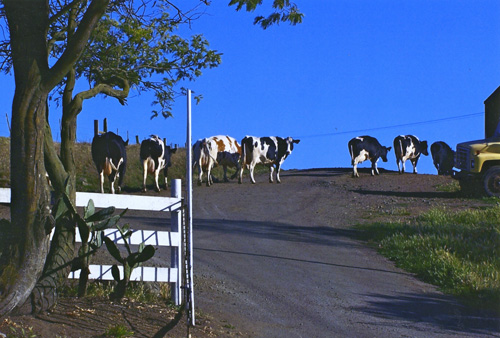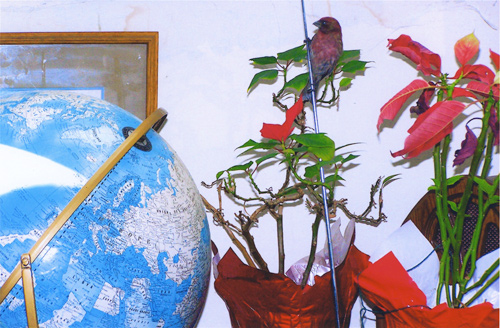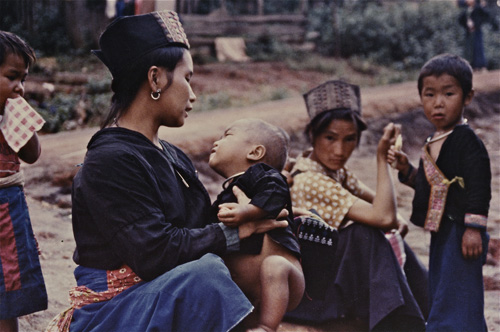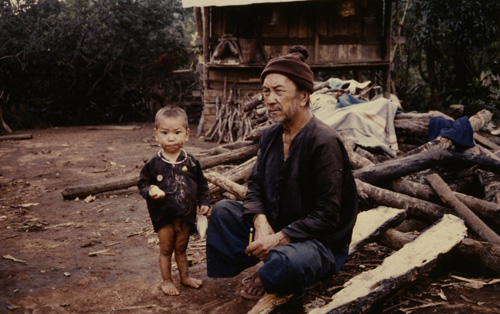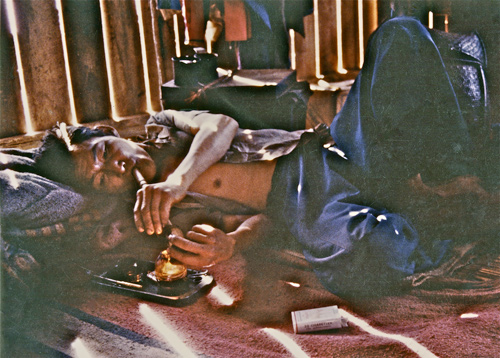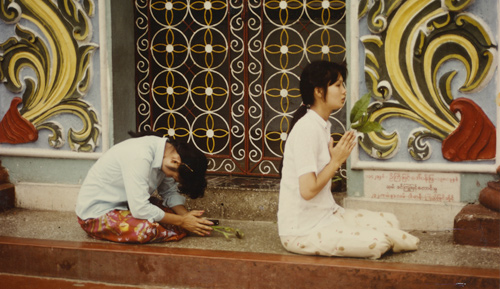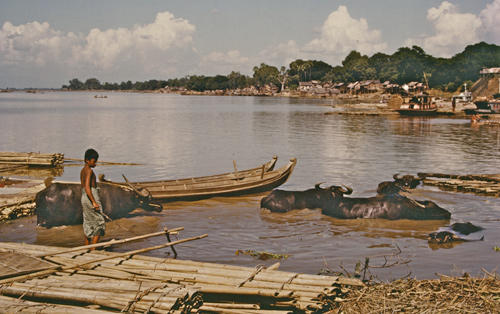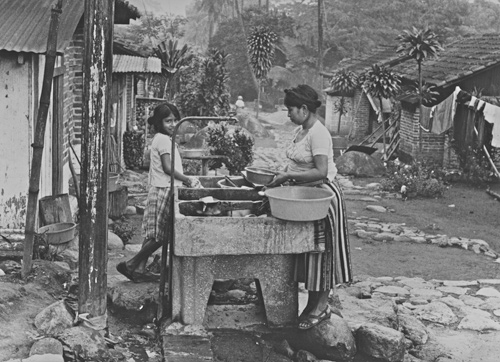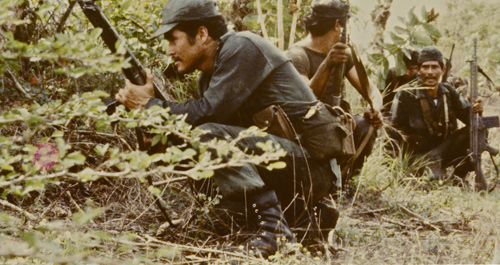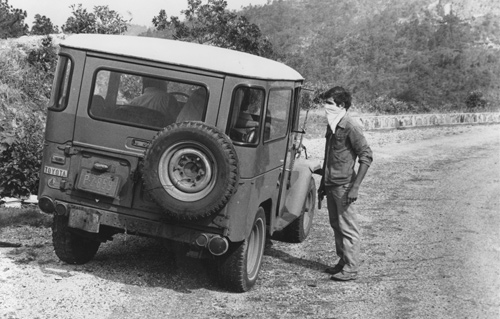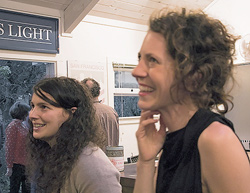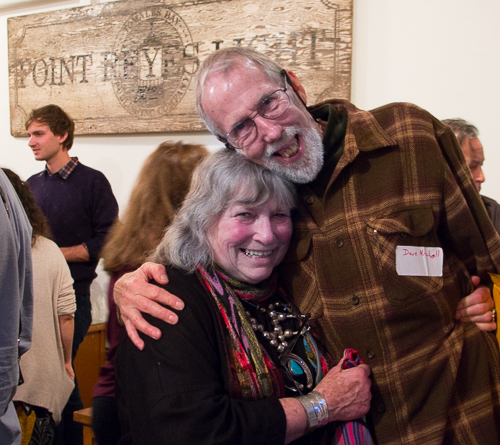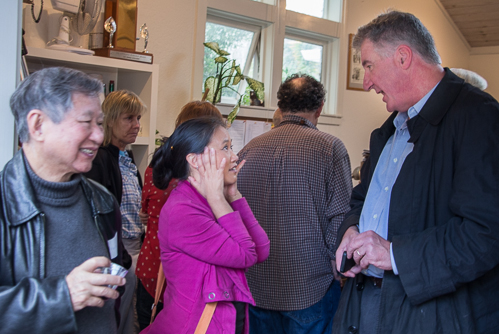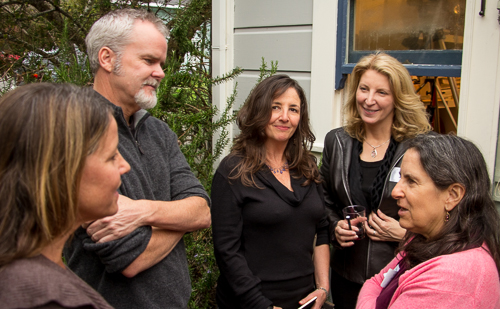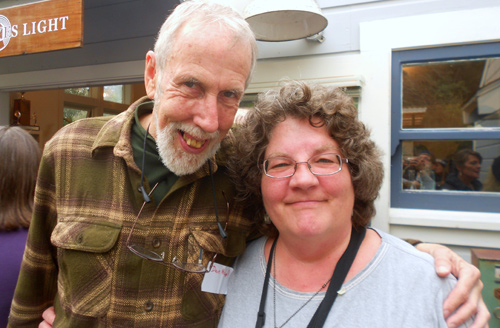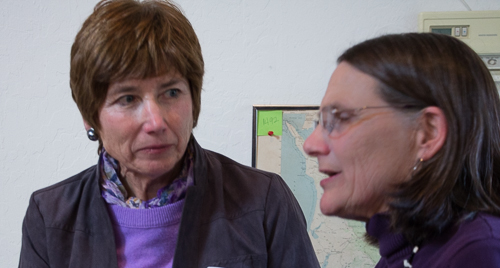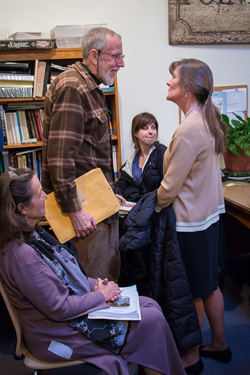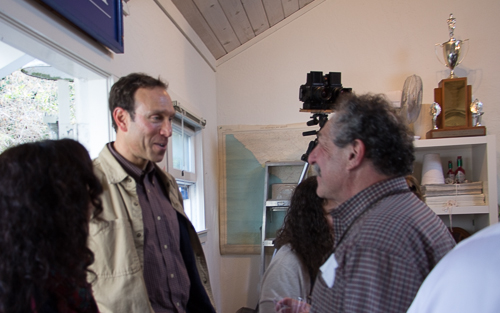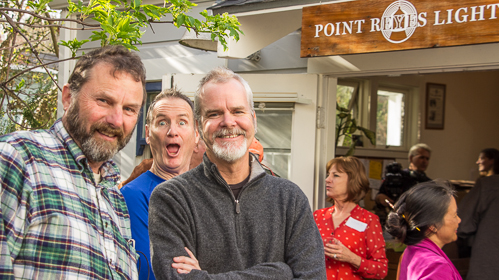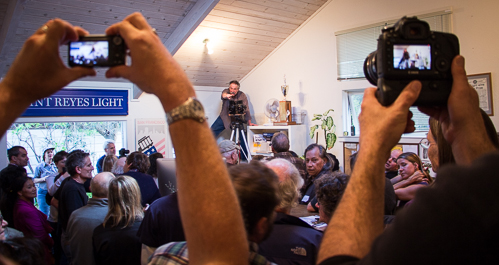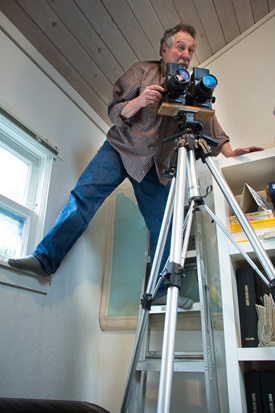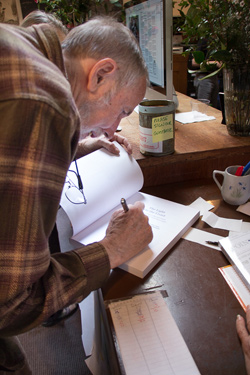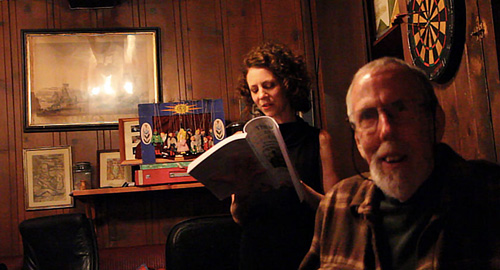Entries tagged with “Point Reyes Light”.
Did you find what you wanted?
Tue 27 Jun 2023
Seventeen years ago I launched this blog which I had been publishing as a newspaper column. For now it’s time to close the curtain on Sparsely Sage & Timely. In the past two to three months, a bout of Parkinson’s disease has substantially crippled me. My lack of balance when standing and walking pretty much confines me to one floor at home. I can’t drive, and just the walk down to where we park cars is so exhausting I rarely leave home.
I’m increasingly forgetful re basic matters. Just last week I had to tell my youngest stepdaughter that for the moment I couldn’t remember how many times I’ve been married. (Her mother in Guatemala was my fourth wife.) Lynn, my fifth wife, and I are about to start our fourteenth year together.
I knew nothing about Parkinson’s disease until I was diagnosed. Here’s how Google defines it: “Parkinson’s disease is a brain disorder that causes unintended or uncontrollable movements, such as shaking, stiffness, and difficulty with balance and coordination. Symptoms usually begin gradually and worsen over time. As the disease progresses, people may have difficulty walking and talking.”
However I’ve just started a course of a dopamine-producing medicine. Parkinson’s is associated with lower dopamine production in the brain, so I’m hoping the new med will be as effective as it’s been described by optimists and medical personnel.
In the meantime, I’ll let the curtain close.
—Dave Mitchell
Sat 29 Jan 2022
Caveat lectorem: When readers submit comments, they are asked if they want to receive an email alert with a link to new postings on this blog. A number of people have said they do. Thank you. The link is created the moment a posting goes online. Readers who find their way here through that link can see an updated version by simply clicking on the headline above the posting.
This weekend I rediscovered a trove of old t-shirts when a knob came loose on a dresser drawer in the bedroom. The drawer, which I had rarely opened, turned out to be full of badly worn shirts I’d collected during the past four decades but then forgotten about. In picking through them, I found many of these t-shirts were souvenirs of places I’d been and things I’d observed. T-shirts are often sold as such, but what I discovered is they can be arranged to tell stories.
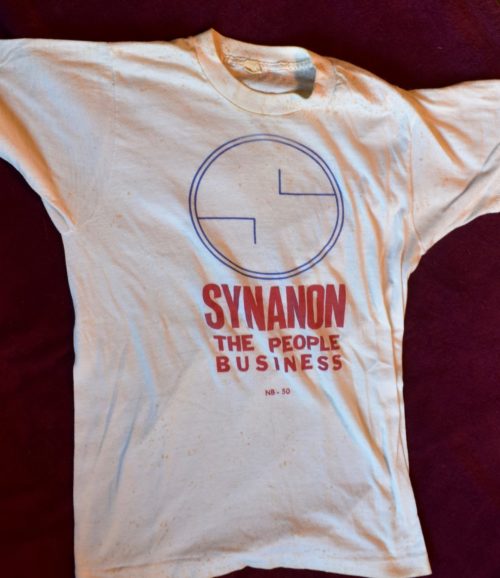
This Synanon t-shirt, which an ex-member of the cult gave me, was an instant reminder of the late 1970s when I edited and published The Point Reyes Light and when Synanon was headquartered in Marshall. As The Light revealed, Synanon’s focus had evolved from drug-treatment to making money. It claimed to be a church in order to avoid regulations, as well as taxes on that money. Its lawyers began referring to Synanon as a “cult.” From there it was a short step into becoming a criminally violent organization. This history makes the shirt’s “Synanon the People Business” message all the more ironic.

Now here’s a souvenir I can use some help with. The shirt commemorates “The First Annual West Marin Oyster Festival.” I vaguely remember such an event, but I don’t recall where it was held nor whether there were more West Marin Oyster Festivals. Any reader who does remember is encouraged to let us all know know in the comment section.

“It Was Another Safe & Sane 4th in Bolinas.” What year was this? What prompted the boast?

How about this t-shirt from  the Gibson House, once a highly regarded bar and restaurant in Bolinas? Was there a particular issue that inspired this? If so, when?

The Marshall Tavern had its own shirt. Does anyone remember when this came out?

The Point Reyes Light distributed a number of t-shirts. This one from the 1970s is a reminder of the days when the cover price was a tenth of what it is today.

One of The Light’s particularly popular features was Tomales cartoonist Kathryn LeMieux’s Feral West. As seen, there was a time that graffiti artists frequently scrawled “SKIDS” along West Marin roadsides.

The vast majority of Mexican immigrants in West Marin are from Jalostotitlán. Beginning in the 1980s, The Light sent reporters to southern Mexico three times to document the historic immigration from Jalos.

As for my own foreign reporting, in the early 1980s, I took a two-year leave from The Light to report for The San Francisco Examiner. The then-Hearst-owned daily sent me to Central America for three months to cover fighting underway in El Salvador and Guatemala.

Surprising acronym. One of my favorite t-shirts from these adventures was from the SPCA Salvadoran Press Corps Association.

Because unfamiliar people showing up during a firefight can easily be suspected of being enemy personnel, the back of my SPCA shirt carried the message: !PERIODISTA! !No DISPARE! Journalist! Don’t shoot!

An example of the violence in the air when I was in Central America. However, since “your country” referred to El Salvador, why was the message in English and not Spanish?
Fri 15 May 2020
Posted by DavidMitchell under History, Point Reyes Station, The Point Reyes Light Newspaper
Comments Off on We’re going to miss the Station House Café
News that the Station House Café in Point Reyes Station will close at the end of this month has shocked many of us in West Marin and has generated newspaper and TV attention throughout the San Francisco Bay Area. Owner Sheryl Cahill says the new owner of the restaurant building wants to up the rent to approximately $700 per day, which she can’t afford. She hopes she can eventually reopen somewhere else.
For years while I edited and published The Point Reyes Light, I ate breakfast there almost daily and often used my mealtime to also pick up news tips, so I’m particularly chagrined by the upcoming closure. In fact, the newspaper and the restaurant have been associated in various ways for more than 50 years, beginning when the paper was published by Don DeWolfe and called The Baywood Press. Back then, the restaurant, which was located where Osteria Stellina is today, was operated by historian Jack Mason of Inverness, a retired Oakland Tribune editor.
Mason, who bought the restaurant in 1966, also wrote Funny Old World for DeWolfe’s paper, and years later in the same column, he described what the restaurant and DeWolfe were like back then. The column was reprinted in our 2013 book, The Light on the Coast. In case you missed it, here it is again:
By Jack Mason
“I’ve got an idea,” Don DeWolfe said.
I laid his medium-rare hamburger on the counter in front of him. “If so, it’s the first time,” I said, in the kidding tone one uses with an old friend, even if he is the local editor.
He didn’t bother to parry the thrust, but handed me a mustard container he had been fiddling with. “This one’s empty,” he said.
I gave him another from under the counter.
“What’s your idea?” I said. My interest was only lukewarm. Certainly I was not flattered that he would ask me for my opinion. Editors do that, ask everybody in the place what they think, then do their own thing regardless. It’s the way Great Battles have been fought and lost since the dawn of time.
He squeezed some of the brown stuff onto his hamburger patty, then pressed down hard on the bun as if afraid the meat might get away. Those were quarter-pound hamburgers I served at the Station House in 1966, and the buns all had sesame seeds on top.

Jack Mason as owner of the Station House Café in 1967.
“The coffee will be ready in a minute,” I said. “We had a couple of customers in here awhile back, and they drank it like it was going out of style.”
“You mean you have other customers?” Don exclaimed. He dug into his burger, reaching for a napkin. “This napkin holder is empty,” he said.
I pushed one towards him from further down the counter, just as the phone rang. “Probably Willi Reinhardt,” I said. “The toilets are plugged up. That ought to take care of your crack about other customers!”
But it was Bob Vilas at the bank. “Jack,” he said, “these checks you wrote Farmer Brothers and Schwartz’s Meat Company last week. What do you expect me to do with them?”
In red-faced confusion, I told Bob it was good of him to call, and said I would be right over to take care of it, as soon as I got rid of my customer.
“You have a customer?”
“Yeah, Don DeWolfe.”

Standing beside his printing press, DeWolfe in 1967 looks over his recently renamed newspaper. Back then the newspaper was produced in the building where Rob Janes Tax Service, Coastal Marin Real Estate, and Epicenter clothing boutique are today.
“Well, tell Don for me, will you, that I think his new idea is great!”
I was really taken aback. “You mean he’s tried the idea out on you? What is it?”
“You don’t know?” Bob cried. “I thought everybody on the street was in on it.”
I hung up, stung, and stood there for a moment letting my anger cool. Here I’d been writing a column for DeWolfe, free. Writing editorials in my spare time, absolutely free of charge! And I’m the last one on the street to know about this great, world-shaking idea of his!
“What is it? I mean, your idea?” I demanded.
He was wiping his hands on four paper napkins at once. Finally he rolled them up into one big ball and dropped them in the green hamburger basket.
“Oh,” he said. “The idea.”
“Yeah, you’ve told everybody else. How about telling old Jack?”
He worked his way off the stool, and pulled some small change out of his pocket, and I mean small. “How much is a hamburger?”
“Did you have cheese on it?”
“No, I can’t eat cheese.”
“Fifty cents. And don’t bother to leave a tip.” I dropped his five dimes and three pennies in the cash drawer. The spring was broken, so we always left the drawer open.
“My idea,” he said, “is to change the name of the paper.”
I felt let down. “What’s wrong with The Baywood Press. It’s been called that for 16 years. It has tradition behind it. People are used to it. Why change it?”
“I thought Point Reyes Light would tie in better with the area,” he said. He inspected me momentarily for my reaction. “I’ll think it over,” I said.
He had to bring all his weight to bear against the door before he could let himself out; the pneumatic catch was stuck. Then he stood there a moment screwing his mouth into an odd shape.
“This is the only hamburger joint I was ever in,” he said, “that didn’t have toothpicks by the cash register.”
The name Baywood Press was changed to Point Reyes Light with the issue of September 8, 1966.
March 2, 1978
The next posting on SparselySageAndTimely.com will reminisce about the restaurant in more recent times.
Sun 8 Jun 2014
Posted by DavidMitchell under General News, Point Reyes Station, The Point Reyes Light Newspaper
Comments Off on Sunday’s Western Weekend Parade and Saturday’s 4-H Fair draw enthusiastic crowds
Saturday was the 65th anniversary of the start of Western Weekend. It began in 1949 with a women’s group, Companions of the Forest Circle 1018, holding a festival, fashion show, and cake walk in their hall on Mesa Road in Point Reyes Station.
The following year, members of the Lions Club, many of whom were married to Circle 1018 members, added a parade and a livestock show for 4-H and Future Farmers of America members. For more than three decades, Western Weekend’s proper name was the West Marin Junior Livestock Show.
Sunday was the parade’s 62nd anniversary. The 1982 and 1983 parades were called off after thousands upon thousands of spectators, a number of them unruly bikers, began showing up for parades. The 4-H Fair, however, continued uninterrupted.

A color guard from the Coast Guard followed by the Sheriff’s Mounted Posse led Sunday’s Western Weekend parade down Point Reyes Station’s main street.

With lights flashing and sirens wailing, a procession of county and volunteer fire department vehicles was near the head of the parade as always.

Western Weekend Queen Summer Cassel will be a senior at Tomales High this fall. She lives in Inverness.

Western Weekend Princess Alyssia Martinez will be a sophomore at Tomales High this fall. She too lives in Inverness.

Grand Marshal of the parade Angelo Sacheli, who retired after 36 years as program manager in West Marin for county Health and Human Services, rode with his wife, Cathy Hall.

The Nave Patrola, as it does every year, spoofed the Italian Army in World War I. The group won 1st place in the Adult Drill Division.
In the early 1970s, an official from the Italian Consulate in San Francisco complained to parade organizers, the West Marin Lions Club, that the patrol disparaged Italians, what with its seemingly confused marchers colliding with each other and going off in all directions. Defenders of the patrol replied that many of the members are of Italian descent.

Inverness Garden Club won 3rd place in the Adult Street Show division. Among the activities of the club, which this year is celebrating its 80th birthday, is maintaining flower beds in public places. The group also provides scholarships for college students from West Marin.

Parade announcer Robert Cardwell (right) with other parade judges sat in the sun at a table on a flatbed truck parked next to Toby’s Feed Barn.

The Point Reyes Light float won 3rd place in the Adult Float division. (Photo by Lynn Axelrod)
Riding on the float once it got rolling were: editor Tess Elliott (middle); reporter Samantha Kimmey (standing at right); board member Jacoba Charles; reporter Christian Peak (at desk); guitarist Ramon Cadiz; a West Marin School student named Hiroki (who lives with his aunts Laurie Monserrat and Tor Taylor in Point Reyes Station); columnist Victor Reyes (standing); Ingrid Noyes (driving her truck); photographer/office manager David Briggs (in cab) with his and Tess’ son Elliott on his lap; business manager Diana Cameron; ad sales representative Harry Korss; former ad department staffer Lynn Axelrod; and this retired publisher.
We riders threw rolled up newspapers to onlookers, as well as wrapped candy to the kids.

A wearing of the news: Three of The Light’s distaff staff wore dresses adorned with newspapers. From left: Jacoba Charles, a member of the paper’s board of directors; Tess Elliott, editor; and Samantha Kimmey, reporter.

KWMR FM community radio in West Marin won 2nd place in the Adult Float division.

Tending the Wells Fargo stage in front of the bank were branch officers Edith Rojas and Jeff Schrott.

Point Reyes-Olema 4-H Club members rode on a truck provided by Clover-Stornetta Dairy. The group won 2nd place in the Kids’ Float division.

Onlookers crowded both sides of the three-block-long parade route down the main street.

Halleck Creek Riding Club for handicapped young people, which meets in Nicasio, won 2nd place in the Kids’ Horse division.

The Aztec Dancers are known as much for their colorful headresses as for their dancing to the beat of a drum. The group took 1st place in the Adult Music division.

The Marin County Free Library’s float thanked West Marin residents for helping pass Measure A on Tuesday’s ballot. The measure renews for nine years the parcel tax that provides funding for the library system, and it carried with 77.7 percent of the vote. The entry won 1st place in the Adult Vehicle division.

Mainstreet Moms, a get-out-the-vote group which began here in 2004, is now countrywide. The West Marin group meets in Point Reyes Station. It examines political issues and is fighting fracking. In the foreground are Mary Morgan (left) and Kathy Callaway. The group won 1st place in the Adult Street Show division and won the overall Best Street Show. (Photo by Lynn Axelrod)

Papermill Creek Children’s Corner preschool in Point Reyes Station was formed in 1972. The float won 1st place in the Kids’ Drill division and won for Best Drill overall. _________________________________________________________________

In Saturday’s 4-H Fair, Camilla Taylor of Point Reyes-Olema 4-H exhibited a six-month-old Holstein calf named Kay Kay. Camilla, who lives on Bivalve Ranch, said she showed the calf to get it comfortable with the crowds and noise it will encounter in larger livestock shows this summer. ____________________________________________________________________
 Olivia Blantz of Nicasio with two Pygmy goats, Nigel (left) and Annabelle. The latter belongs to Olivia’s sister Phoebe.
Olivia Blantz of Nicasio with two Pygmy goats, Nigel (left) and Annabelle. The latter belongs to Olivia’s sister Phoebe.
Olivia, who is a member of Point Reyes-Olema 4-H Club, said the two goats are cousins and were born the same day in February 2013.
___________________________________________________________________

It’s spelled Rabbits. From left on far side of table: Point Reyes-Olema 4-H Club member Ellierose Jackson from Nicasio exhibited a nine-week-old Angora rabbit named Joey; Tri-Valley 4-H Club member Nicole Casartelli showed a Castor mini-rabbit; and San Rafael 4-H Club member Erin Rose Charlton showed a three-year-old Lionhead named Finnegan.
One of the 4-H leaders laughingly told me that a year ago a kid accidentally left out the “T” in an “American Rabbits” sign, making it appear that some “American Rabbis” were entered in that day’s competition. _____________________________________________________________________
In the judging of 4-H projects Saturday, Ruby Clarke won a gold ribbon and Best in Show for a dress. Ashley Winkelmann won a blue ribbon for a romper made for infants, as did Camilla, Olivia and Phoebe for the rompers they each sewed.
The Blantz girls also took ribbons for: photography (Phoebe) and lettuce (Olivia).
Ashley also won a gold ribbon for a knitted hat and a gold for her cake decoration. Ruby took another Best in Show for her tale, “How the Cat Got its Tail.” Her mom, Rhonda Kutter, called it “a tale of a tail.” ________________________________________________________________

Toby’s Feed Barn hosted a barn dance, as well as the queen coronation, Saturday evening. Providing the music was the band Ingrid Noyes and Friends. _____________________________________________________________________

Meanwhile at the entrance to the Feed Barn (Photo by Lynn Axelrod)
As a benefit for the Aztec Dancers, women on Saturday evening sold Mexican dinners and beverages. I enjoyed a delicious pork tamale and a glass of horchata, with which I was unfamiliar. I’m still not sure what all was in it, only that it was white and tasted of cinnamon and vanilla. All in all, a first-rate discovery.
Tags: Alyssia Martinez, Angelo Sacheli, Aztec Dancers, Cathy Hall, Christian Peak, Ingrid Noyes, Inverness Garden Club, Jacoba Charles, Kathy Callaway, KWMR, Mainstreet Moms, Marin County Free Library, Mary Morgan, Nave Patrola, Papermill Creek Children's Corner, Point Reyes Light, Point Reyes-Olema 4-H Club, Ramon Cadiz, Robert Cardwell, Samantha Kimmey, Summer Cassel, Tess Elliott, Toby's Feed Barn, VÃctor Reyes, Wells Fargo stage, Western Weekend parade
Sun 11 May 2014
Posted by DavidMitchell under Photography
Comments Off on A few of my photos in war and peace from West Marin to Southeast Asia to Central America
“Every picture tells a story, don’t it?” Rod Stewart

Cows heading toward the milking barn at Steve and Sharon Doughty’s ranch in Point Reyes Station. Of all the photos I’ve shot of West Marin agriculture, this is my favorite (2004).

The newsroom of The Point Reyes Light when the newspaper was located in Point Reyes Station’s Old Creamery Building (2004).
One day I heard something banging around in the firebox of the newsroom’s potbellied stove, which was not lit, so I opened the door to look inside. This house finch, which had apparently fallen down the chimney, flew out and started flying around the room, banging into the closed skylights.
I opened a skylight, but the finch didn’t fly out. Instead it landed on the antenna to our weather radio and perched there looking out over the world. The scene seemed so symbolic he could have been an avian journalist.
Before long a house finch outside the building began singing. The one inside sang back. After several seconds of their calling back and forth, the finch in the newsroom finally flew out the open skylight.

A Golden-crowned sparrow disguised as a stained-glass window, Point Reyes Station (2004).

Scotty’s Castle in Death Valley (2005).
The castle was built in the 1920s by Albert Mussey Johnson, a millionaire from Chicago. Scotty (Walter Scott) was a con man, who took advantage of Johnson, as well as others. Nonetheless, Johnson kept Scotty around to entertain guests with his storytelling.

Thailand (1986).
Two mothers and their children in one of Thailand’s semi-isolated hilltribes.

A Thai hilltribe father and his son (1986).
The father is holding a Point Reyes Light ballpoint pen, which I had given him. The pens were made in 1979 to commemorate the paper’s winning the Pulitzer Prize for Meritorious Public Service.

Thailand’s hilltribes grow opium poppies, as well as bananas and other crops. Here a man in his hut without windows, only gaps between wall boards for light, smokes opium in a pipe (1986).

Rangoon, Burma (1986).
Two Buddhists pray outside the Shwedagon Pagoda. In 1989, the military government changed the country’s name to Myanmar because Burma was the name the British used when the country was their colony. Some citizens, however, question the military’s right to change their country’s name, and many continue to use the name Burma. The name comes from the name of the country’s largest ethnic group, the Bamar.

Mandalay, Burma (1986).
Buddhist monks in Thailand and Burma are considered novices before they turn 20. Most live monastic lives for only short periods, a few years or even just a few days. Youths receive schooling inside or outside of their temple. Helping take care of the temple is one of their main responsibilities. Novices are not expected to be continually solemn, and these boys felt free to roughhouse with each other.

Boy tending water buffalo at the edge of the Irrawaddy River at Mandalay (1986).

Guatemala (1982).
Two Mayan girls wash dishes at a pila (outdoor trough) because their homes on a finca (plantation) lack running water. For many women in rural villages, washing dishes and clothes together at a community pila is their primary time to socialize.

El Salvador (1983).
Government forces take cover during a firefight with FMLN guerrillas. The government patrol, which had been fighting all night, was exhausted and retreating under fire.

Guerrilla-held territory, El Gramal, El Salvador (1983).
A guerrilla stops a vehicle belonging to Antel, the government-owned phone company, and then sends it on its way. Earlier in the day, an Antel driver divulged a bizarre arrangement whereby the guerrillas regularly borrowed the four-wheel-drive Toyota for night patrols but returned it to Antel in the morning. Such cooperation probably explained why an Antel manager in El Gramal said the government phone company in his area was able to operate as usual even though Popular Liberation Front guerrillas had by then occupied the region for six months.
Tags: Albert Mussey Johnson, Antel, Buddhism, Burma, Death Valley, Doughty ranch, El Salvador, finca, Golden-crowned sparrow, Guatemala, House finch, Irrawaddy River, Mandalay, Myanmar, opium, pila, Point Reyes Light, Rangoon, Scotty's Castle, Shwedagon Pagoda, Thailand
Tue 4 Mar 2014
During an open house and reunion Saturday, a happy throng of Point Reyes Light readers, staff, and columnists joined with former staff and correspondents to celebrate the 66th anniversary of the newspaper’s first issue. 
The reunion drew staff and contributors who had worked at the paper at different times during the past 44 years. A number of former staff traveled hundreds of miles to attend. A couple of them arrived from out of state.
From left: Laura Lee Miller, David Rolland (who drove up from San Diego), Cat Cowles, Wendi Kallins, Janine Warner (who drove up from Los Angeles), Elisabeth Ptak (back to camera), Gayanne Enquist, Art Rogers (talking with Elisabeth), Keith Ervin (who drove down from Seattle), B.G. Buttemiller, and (in blue shirt with back to camera) Victor Reyes. (Photo by Dave LaFontaine) ______________________________________________________________
 The party was also a celebration of the Tomales Regional History Center’s publishing The Light on the Coast: 65 Years of News Big and Small as Reported in The Point Reyes Light.
The party was also a celebration of the Tomales Regional History Center’s publishing The Light on the Coast: 65 Years of News Big and Small as Reported in The Point Reyes Light.
Stuart Chapman of Bolinas, a former member of the staff, shot this photo, which he titled “Dave, Proud Father” because I authored the book.
My co-author was Jacoba Charles. Jacoba reported for The Light under its previous ownership and is a member of the paper’s board of directors under its present ownership, Marin Media Institute.
The colored Post-its, by the way, mark selections that I, along with others, would be reading to attendees. ____________________________________________________________

From left: Co-author Jacoba Charles, photographer Art Rogers, scientist Corey Goodman, photographer David Briggs, editorial consultant on the book and former member of The Light’s ad department Lynn Axelrod, and Spanish-language columnist Victor Reyes. (Except where noted otherwise, the photos in this posting were shot by former Light reporter Janine Warner)

Michael Gahagan (left), who drove down from the Sierra Nevada town of Columbia to attend, published The Light from 1970 to 1975. Here he reminisces with historian Dewey Livingston of Inverness. Dewey for many years provided a weekly historical feature titled “West Marin’s Past.”

During the Gahagan years, Lee Sims (left) was the newspaper’s main typographer. This was back in the days before offset printing, and each page that went on the press had to be composed in lead.
In a piece written for The Light’s 30th anniversary in 1978 and reprinted in The Light on the Coast, Michael Gahagan’s former wife Annabelle comments, “Poor Lee, he had the disadvantage of being a friend of ours. One can always depend on friends, and we did lean on him! He was always underpaid and overworked. (Weren’t we all?)”

Catching up on old times are (in foreground from left): former news editor David Rolland, who drove to the reunion from San Diego, former typesetter Cat Cowles of Inverness, and former reporter Joel Reese, who flew in from Chicago. Standing behind them are current reporter Christopher Peak (left) and Matt Gallagher, who filled in as managing editor from February through July 2011. _____________________________________________________________
 Samantha Kimmey (on the left) has been a reporter at The Light for the past year. With her is Tess Elliott of Inverness, who has been The Light’s editor for the past eight year. ____________________________________________________________
Samantha Kimmey (on the left) has been a reporter at The Light for the past year. With her is Tess Elliott of Inverness, who has been The Light’s editor for the past eight year. ____________________________________________________________

Gayanne Enquist was office manager during much of the 27 years I owned The Light. She was there when I arrived in July 1975, and she was there when I left in November 2005. (I was away reporting for the old San Francisco Examiner between September 1981 and the end of 1983.)

Former reporter Michelle Ling trades stories with Don Schinske, who was business manager during the 1990s and was co-publisher from 1995 to 1998. At left is her father, Dr. Walter Ling who teaches at UCLA. With his wife, May, Dr. Ling drove to Point Reyes Station for the celebration. In the background, Mary Papale listens intently to Laura Rogers.

Ingrid Noyes of Marshall (left) tells a story to my co-author, Jacoba Charles, outside The Light office.

Former staff recall the days of yore. From left: artist Laura Lee Miller, news editor David Rolland, typesetter Cat Cowles, reporter Janine Warner, and San Geronimo Valley correspondent Wendi Kallins. (Photo by Dave LaFontaine)

Sarah Rohrs was a reporter at The Light in the late 1980s. When several of us took turns reading aloud selections from The Light on the Coast, I read Sarah’s wonderfully droll account of a county fireman in Hicks Valley having to get a cow down out of a tree. (Photo by Joe Gramer)

Larken Bradley (left), who formerly wrote obituaries for The Light, chats with librarian Kerry Livingston, wife of Dewey.

Photographer Janine Dunn née Collins in 1995 traveled with news editor David Rolland to Switzerland’s Italian-speaking Canton of Ticino and to war-torn Croatia in doing research for The Light’s series on the five waves of historic immigration to West Marin. Here she chats with the paper’s current photographer David Briggs (center) and her husband John Dunn.

Former Light graphic artist Kathleen O’Neill (left) discusses newspapering in West Marin with present business manager Diana Cameron. _____________________________________________________________
 Former Light reporter Marian Schinske (right) and I wax nostalgic while photographic contributor Ilka Hartmann (left), looks on and Heather Mack (center), a graduate student in Journalism at UC Berkeley, takes notes. ____________________________________________________________
Former Light reporter Marian Schinske (right) and I wax nostalgic while photographic contributor Ilka Hartmann (left), looks on and Heather Mack (center), a graduate student in Journalism at UC Berkeley, takes notes. ____________________________________________________________

Former news editor Jim Kravets (left) jokes with photographer Art Rogers.

John Hulls of Point Reyes Station and Cynthia Clark of Novato have in the past worked with The Light in various capacities. In 1984, Cynthia set up the first computer system for the newsroom and ad department.

From left: Stuart Chapman of Bolinas, who formerly worked in The Light’s ad department, swaps stories with journalist Dave LaFontaine of Los Angeles and Light columnist Victor Reyes.

Historian Dewey Livingston (left), a former production manager at The Light, poses with former news editor David Rolland while former business manager Bert Crews of Tomales mugs in the background.

In preparing to shoot one of his signature group portraits, Art Rogers directs members of the crowd where to stand. With the throng crowded into the newspaper office, getting everyone in the right place to be seen was such a complicated operation that some of the photographer’s subjects began photographing him. _____________________________________________________________
 In shooting a series of three-dimensional photos, Art had to use a tall tripod and balance precariously on a window ledge and ladder. _____________________________________________________________
In shooting a series of three-dimensional photos, Art had to use a tall tripod and balance precariously on a window ledge and ladder. _____________________________________________________________

Art’s wife, Laura, who didn’t have to work nearly as hard, pages through a copy of The Light on the Coast. _______________________________________________________________
 The party was in part a book-signing, and I signed copies off and on all afternoon. ______________________________________________________
The party was in part a book-signing, and I signed copies off and on all afternoon. ______________________________________________________

Light editor Tess Elliott reads Wilma Van Peer’s 1998 account of working for the paper’s founders, Dave and Wilma Rogers half a century earlier. The newspaper was called The Baywood Press when it began publishing in 1948. The paper’s fourth publisher, Don DeWolfe, changed the name to Point Reyes Light in 1966.
Originally the readings were scheduled to be held in the newspaper office, but so much socializing was going on they had to be delayed until the party moved around the corner to Vladimir’s Czech Restaurant where the banquet room had been reserved.
Among those reading besides Tess were Dewey Livingston, David Rolland, Matt Gallagher, and I. Anyone wishing to watch me read former publisher (1957 to 1970) Don DeWolfe’s account of his initiation to running the paper can click here.
It was a grand party, and I want to thank present Light staff, who made arrangements for the party, and former staff, some of whom traveled significant distances to attend the reunion.
Two other book readings are also scheduled. At 3 p.m. Sunday, March 9, in Point Reyes Presbyterian Church, Point Reyes Books will sponsor readings from The Light on the Coast and from Point Reyes Sheriff’s Calls, Susanna Solomon’s book of short stories inspired by Sheriff’s Calls in The Light.
At 4 p.m. Sunday, April 27, in its Corte Madera store, Book Passage will sponsor readings from The Light on the Coast. Refreshments will be served.
Tags: Art Rogers, B.G. Buttemiller, Baywood Press, Bert Crews, Cat Cowles, Christopher Peak, Corey Goodman, Cynthia Clark, Dave LaFontaine, Dave Rogers, David Briggs, David Rolland, Dewey Livingston, Diana Cameron, Don DeWolfe, Don Schinske, Elisabeth Ptak, Gayanne Enquist, Heather Merk, Ilka Hartmann, Jacoba Charles, Janine Dunn née Collins, Janine Warner, Jim Kravetz, John Dunn, John Hulls, Kathleen O'Neill, Keith Ervin, Kerry Livingston, Larken Bradley, Laura Lee Miller, Laura Rogers, Lee Sims, Marian Schinske, Matt Gallagher, Michael Gahagan, Point Reyes Light, Sarah Rohrs, Stuart Chapman, Tess Elliott, The Light on the Coast, VÃctor Reyes, Wendi Kallins
Sun 8 Dec 2013
The April 12, 1956, edition of Point Reyes Station’s Baywood Press reported: “Mrs. Joe Curtiss’ television set caught fire last week, and the wall behind the set began burning.
“Before the fire department could answer the call, Margie picked up the set, threw it out the window, and proceeded to extinguish the blaze.”
That was the entire report, but Margie must have been a hardy soul because that early TV would have been big and heavy as well as hot.
 The Baywood Press, as The Point Reyes Light was called for its first 18 years, began publication on March 1, 1948.
The Baywood Press, as The Point Reyes Light was called for its first 18 years, began publication on March 1, 1948.
The newspaper’s coverage of the past 65 years of West Marin news, big and small, is the focus of a book its publisher, the Tomales Regional History Center, has just released.
The book’s cover at left.
I’m particularly interested in the book, The Light on the Coast, because I, along with Jacoba Charles, authored it.
The graphic artist was Dewey Livingston, formerly production manager at The Light. He is now the historian at the Jack Mason Museum of West Marin History and is an historian for the National Park Service.
The Light is in its 10th ownership, Marin Media Institute, and the evolution of the newspaper itself is part of the story. As editor and publisher for 27 years, I was responsible for the chapters covering the first eight ownerships. Jacoba, who is on The Light’s board of directors and formerly was a reporter for the paper, was responsible for the most recent two.

Flooding in Bolinas. The ferocious storms that periodically hit the coast have always received extensive coverage in The Light.
Highlights of the 354-page book include the evolution of West Marin agriculture; the effects of the arrival of the counterculture on local politics, law enforcement, and the arts; the creation of the Point Reyes National Seashore and the Golden Gate National Recreation Area.
Examples of The Light’s Pulitzer Prize-winning coverage of violence and other illegal activities by the Synanon cult are, of course, included in The Light on the Coast.
The newspaper’s complete series on the five historic waves of immigration to West Marin is also a central chapter.
The forefathers of many longtime families in West Marin arrived in immigrations from specific locales in: Ireland, Switzerland’s Italian-speaking Canton of Ticino, Croatia, and Portugal’s mid-Atlantic Azores. Researching their journeys to West Marin, as well as the more-recent immigration from Mexico, involved sending Light reporters abroad four times between 1988 and 1997.
 This illustration for Sheriff’s Calls by cartoonist Kathryn LeMieux’s was often used in Western Weekend editions. The final section of our book consists of some of the more unusual Sheriff’s Calls from the the past 38 years.
This illustration for Sheriff’s Calls by cartoonist Kathryn LeMieux’s was often used in Western Weekend editions. The final section of our book consists of some of the more unusual Sheriff’s Calls from the the past 38 years.
The Light on the Coast features, along with a variety of news and commentary, a sampling of cartoons, advertising, and photography (including 10 portraits by Art Rogers). My partner Lynn Axelrod and I reviewed almost 3,000 back issues of The Point Reyes Light/Baywood Press in compiling the book. Jacoba reviewed more than 400. After making our selections, she and I wrote background narratives for many of them.
Those who’ve read the book have had good things to say about this approach of presenting West Marin’s history through the pages of The Light. Commenting on the book, San Francisco Chronicle reporter and columnist Carl Nolte writes: “The Point Reyes Light is a great window into a fabulous small world.”
Dr. Chad Stebbins, executive director of the International Society of Weekly Newspaper Editors, is likewise enthusiastic: “Dave Mitchell and The Point Reyes Light are synonymous with top-shelf newspapering. Dave is one of the few small-town editors ever to win a Pulitzer Prize; his investigation of the Synanon cult is a textbook example of tenacious reporting. His witty and colorful anecdotes always make for good reading.”
The Light on the Coast is available at Point Reyes Books for $24.95 plus tax.
It can be ordered online from the Tomales Regional History Center bookstore for $29.95 including tax and shipping.
Mon 17 Oct 2011
The editor and publisher of The West Marin Citizen, Joel Hack, will retire after this week’s issue, which will be published Thursday, Oct. 20. Advertising director Linda Petersen of Inverness will take over ownership of the weekly newspaper.

Joel Hack at Drakes Bay Oyster Company
“I’m leaving because I’ve been doing this for 17 years,” Hack, 67, told me Sunday, “and it’s time to stop.” Publishing a small-town weekly, he added, “is constant, 24/7 and 52 weeks a year. I’ve had five weeks off in 17 years. It was approaching burnout.”
Before Hack started The Citizen, he had been the editor and publisher of The Bodega Bay Navigator for 12 years. But after unsuccessful negotiations with Robert Plotkin of The Point Reyes Light and after losing several major advertisers in a real estate market down turn, Hack in August 2006 dropped the print version and began publishing exclusively online.
So why did he start The Citizen in West Marin? In November 2005, Plotkin, a new resident in Bolinas, bought The Point Reyes Light from me. At the same time, he offered to buy The Navigator from Hack, but when they couldn’t strike a deal, “he decided he would just take Bodega Bay over,” Hack said.
 As the new owner of The Light, Plotkin (right) told The San Francisco Chronicle he wanted to create a paper with the “sophistication of The Economist” and the “flair” of The New York Observer newspaper. (Chronicle photo by Eric Luse)
As the new owner of The Light, Plotkin (right) told The San Francisco Chronicle he wanted to create a paper with the “sophistication of The Economist” and the “flair” of The New York Observer newspaper. (Chronicle photo by Eric Luse)
Instead of providing highbrow reporting, however, Plotkin quickly offended many West Marin readers with coverage that was often lurid, a full-color, front-page photo of two chickens, whose throats had just been slit, hanging upside down with blood pouring from their necks, a girl chomping into the severed head of a goat during festivities on Mount Tamalpais etc.
When The Light started covering Bodega Bay news, “it was one more thorn in the side of West Marin readers,” Hack said. “We have nothing to do with Bodega Bay,” was their response. “Why should we be reading about it?”
Nor did The Light go over well in Bodega Bay. Plotkin sent three reporters to cover stories there, Hack said, but the venture “lasted only about a month.” With Plotkin unfamiliar with Western Sonoma County, Hack explained, “the coverage was a little off.” Plotkin ran into the same problem when he tried to extend The Light’s coverage to Fairfax in East Marin, Hack added.

Reporter Lynn Axelrod of Point Reyes Station inspects last week’s issue. Her reporting and editing are expanding under The Citizen’s new structure.
Meanwhile, Plotkin and I soon had a falling out, and I stopped submitting occasional pieces, for which I was not charging, to The Light and sent them to The Navigator website instead. In selling The Light to Plotkin, I had signed a non-competition agreement that I would not write for another Marin County newspaper, but attorney Robert Powsner on Plotkin’s behalf, got Judge Jack Sutro to issue a bizarre injunction against Hack and me that barred my posting on Hack’s website.
Powsner told Sutro that my posting on the website was “damaging or destroying” The Light, and the judge accepted the claim. In chambers, Sutro told lawyers for both sides that protecting Plotkin’s $500,000 investment in The Light outweighed constitutional prohibitions against censoring free expression.
Moreover, the now-retired jurist didn’t seem to understand the Internet and ruled that a Sonoma County website is the same as a Marin County newspaper.

Linda Petersen had been my houseguest when Hack began looking for an advertising representative. She took the job and played a major role in getting the newspaper off the ground financially. Her role at the paper eventually expanded to include business and reporting. What will her title be as owner? Hack has suggested “la jefa” [the chief], she responded.
Hack was already feeling “a little thing of anger” toward Plotkin for trying to go into competition with him after he revealed The Navigator’s finances during business negotiations. Then came the injunction. Added to that, “readers in West Marin were pissed off,” Hack said, so in July 2007, he started his own weekly newspaper in Point Reyes Station. The results were gratifying.
“People popped in and wanted to work on The Citizen,” Hack said. “Outside contributors and staff had a sense of what a community newspaper should be. In the first year, we did very well. We had lots of advertisers and lots of readers — really good readers.
“But within the first six months, the stock market crashed, and the whole economic system collapsed. The recession dug its heels in. Where we had been flying high, things had gotten very much more difficult, and they haven’t improved… Real estate dried up, and in total, Realtors [had been] the largest advertisers.”
Nonetheless, The Citizen “had a winning formula,” Hack said, “because we were also publishing The Marin Coast Guide, and that saw us through.” These days “we struggle,” he noted, “but at times we break even.”

In contrast to Plotkin, who often was viewed as an outsider in West Marin, Hack did his best to take part in the community. Here the mustachioed publisher served a guest at the 2008 community Thanksgiving Dinner in the Dance Palace.
With a second newspaper in town, The Light was “losing between $5,000 and $15,000 a month,” Plotkin himself reported. Across the country newspapers were losing money, Plotkin wrote, so “this is not unique to The Light, although there have been some aggravating factors, namely myself. My sensibility is at odds with many in the community.”
Of that there was no doubt. During the first couple of years under the last publisher, editor Tess Elliott wrote after Plotkin sold The Light in May 2010, “it lost one third of its subscribers; the effects of those years continue to reverberate. Our reporters still regularly hear complaints and flat out refusals to talk.”
As for Plotkin, he had acknowledged he would take a “financial bloodbath” when he sold the paper. He reportedly received about $150,000 for The Light after paying $500,000 for the newspaper and periodically subsidizing it.
What’s next for the two newspapers? Could the 63-year-old Point Reyes Light and the four-year-old West Marin Citizen ever join together as one? Nothing is in the works, which is too bad, for it means two small-town weeklies will continue to split West Marin’s readership and advertising.
Both papers have had to take dramatic cost-cutting measures. The Light can no longer field as many reporters as it once did, and both papers have had to relocate to cheaper quarters. In the last year, The Light moved out of Point Reyes Station and now operates from a small office behind the Inverness Post Office. The Citizen, which had been renting the old Point Reyes Station Library next to the Pine Cone Diner, moved into filmmaker John Korty’s former studio on B Street.
The Light is now owned by Marin Media Institute, and friends of The Citizen have begun looking for investors from the community to become part owners, along with Petersen.
As for Hack, what will he now do? “I don’t know,” he replied, “but I’m sure I’ll come up with something.”


